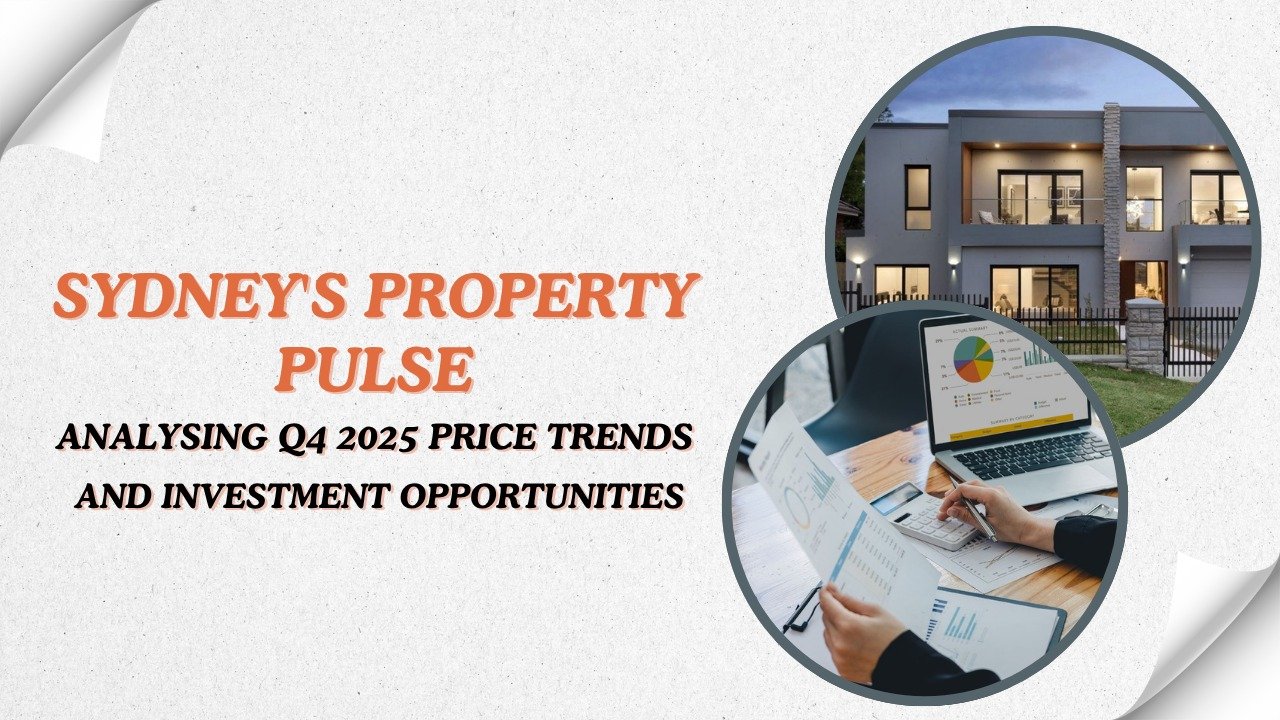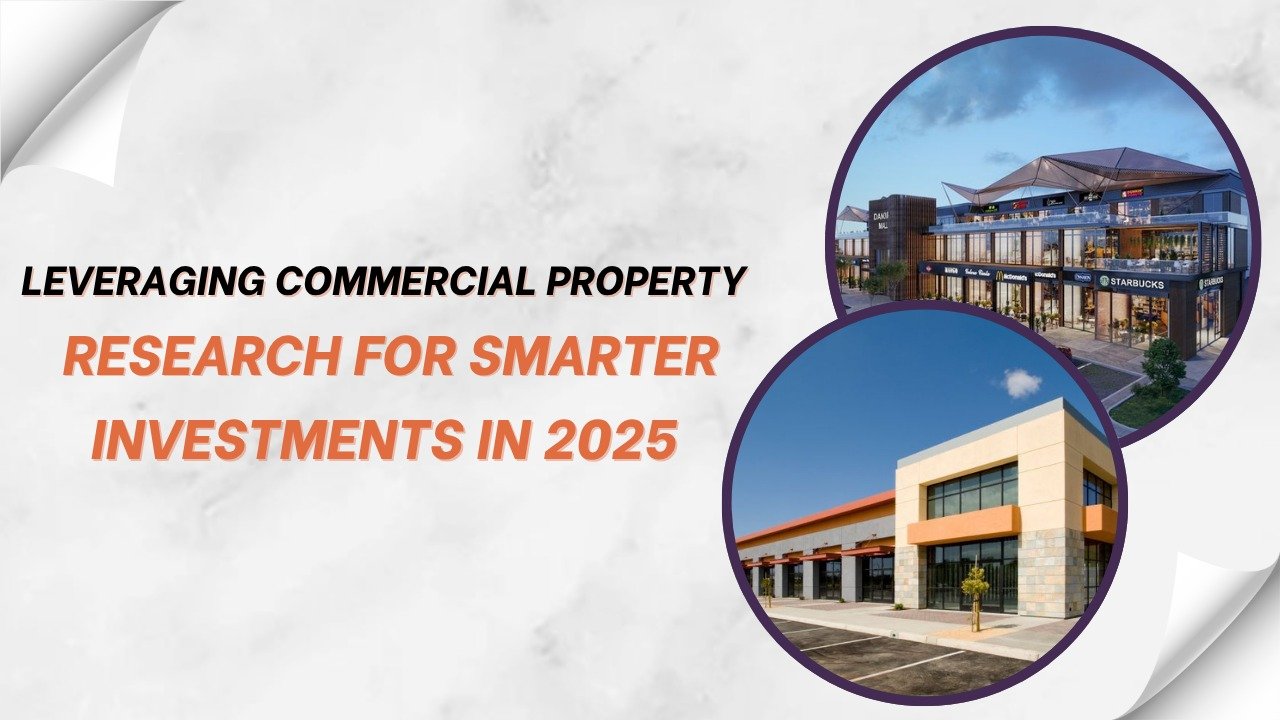Let’s talk about one of the biggest challenges in property...
Read MoreNewsfeed
Share Article
Categories/Tags
Register To Our E-News
Latest News
The Power of Research: How Commercial Property Analysis Uncovers Hidden Gems
Walk down any major city street in Australia, and you’ll...
Read MoreTop 5 Data-Driven Real Estate Investment Strategies for 2025
Let’s be honest: the days of buying any property and...
Read MoreAustralian Property Price Trends: A National Overview for Investors
Trying to get a clear read on the Australian property...
Read MoreSydney’s Property Pulse: Analysing Q4 2025 Price Trends and Investment Opportunities
Let’s be honest, trying to pin down the Sydney house...
Read More
Property Managed Funds Demystified: A Smart Path to Portfolio Diversification
Let’s talk about one of the biggest challenges in property investing: putting all your eggs in one basket. You’ve worked

The Power of Research: How Commercial Property Analysis Uncovers Hidden Gems
Walk down any major city street in Australia, and you’ll see them: commercial properties. The office tower, the neighbourhood shopping

Top 5 Data-Driven Real Estate Investment Strategies for 2025
Let’s be honest: the days of buying any property and watching its value skyrocket are long gone. Today’s property market

Australian Property Price Trends: A National Overview for Investors
Trying to get a clear read on the Australian property market can feel like trying to predict the weather in

Sydney’s Property Pulse: Analysing Q4 2025 Price Trends and Investment Opportunities
Let’s be honest, trying to pin down the Sydney house price market can feel like trying to predict the weather.

How to Invest with a Property Fund: A Step-by-Step Guide to Getting Started
You’ve decided that direct property investment—the 3am plumbing emergencies, the tenant dramas, the sheer concentration of capital—isn’t for you. But
Industry
Leveraging Commercial Property Research for Smarter Investments in 2025
-
Real Estate Science

Let’s be honest: investing in commercial property can feel like navigating a labyrinth. Unlike the relatively straightforward residential market, the commercial world is a complex ecosystem driven by economic shifts, demographic trends, and intricate tenant dynamics. In 2025, flying blind isn’t just risky—it’s a fast track to underperformance.
So, how do the most successful investors find their way? They use a powerful torchlight: rigorous commercial property research.
Gone are the days of relying on a “gut feeling” about a neighbourhood. Today, data is the most valuable currency in real estate. This isn’t about drowning in spreadsheets; it’s about finding the signal in the noise to make confident, strategic decisions. Let’s explore how you can leverage commercial property research to build a smarter, more resilient portfolio in 2025.
Why “Location, Location, Location” is No Longer Enough
The old adage is only partially right. Yes, location is critical, but in 2025, we need to ask: “Location for what?” A perfect location for a retail strip mall might be a terrible one for a last-mile logistics warehouse.
This is where commercial property research moves beyond simple map-reading. It involves understanding the why behind a location’s potential. It’s the difference between seeing a vacant lot and seeing a future-proofed asset poised for growth.
The 2025 Research Toolkit: Key Data Points You Can’t Ignore
To make smarter investments, you need to be looking at the right indicators. Here are the core pillars of effective commercial property research this year.
1. Macro-Economic Pulse Checks
The commercial property market is inextricably linked to the broader economy. Key metrics to monitor include:
- Employment Data: Who are the major employers in the area? Are they hiring or downsizing? Strong, diverse employment is a bedrock for demand in office and retail spaces.
- Interest Rate Trajectory: While rate movements impact all real estate, they are a primary factor in determining your borrowing costs and overall investment yield. Following forecasts from the Reserve Bank of Australia (RBA) is essential.
- Business Confidence Index: When businesses are confident, they expand, lease more space, and invest in their premises.
2. The Hyper-Local Dive: It’s All in the Details
This is where you move from the big picture to the street view. Macro-data might point you to a city, but micro-data points you to the exact asset.
- Supply and Demand Analysis: How much new commercial stock is coming online in the next 12-24 months? An oversupply can suppress rental growth, even in a strong macro-environment.
- Vacancy Rates: Don’t just look at the current rate. Look at the trend. Are vacancies tightening or softening? A tightening vacancy rate is a powerful leading indicator of future rental growth.
- Infrastructure Pipelines: Is a new transport link, hospital, or university being built? Major infrastructure projects can radically transform an area’s commercial viability. The Australian Bureau of Statistics (ABS) is a goldmine for demographic and building approval data.
3. Sector-Specific Tailwinds and Headwinds
“Commercial property” isn’t a single asset class. Your research must be tailored to the sector.
- Industrial & Logistics: The e-commerce boom isn’t slowing down. Research should focus on transport connectivity, land availability, and the strength of the local manufacturing and distribution sectors.
- Office Space: The post-pandemic landscape is still evolving. Look beyond simple vacancy rates. Analyse sub-markets with high-quality, sustainable (ESG) buildings, as these are proving most resilient. Demand is focused on amenities, flexibility, and prime locations.
- Retail: The narrative isn’t all doom and gloom. It’s about experiential retail and convenience. Research should focus on catchment area affluence, foot traffic patterns, and the adaptability of centres to include hospitality and services.
Turning Research into Action: A Practical Framework
So, you have the data. Now what? The goal is to transform information into a decisive investment thesis.
- Identify the Gap: Your research might reveal a mismatch between current supply and emerging demand. For example, you might find a growing tech hub with a shortage of modern, flexible office spaces.
- Stress-Test Your Assumptions: What happens if interest rates rise another 1%? What if a major tenant leaves? Good research allows you to model different scenarios and understand your investment’s resilience.
- Benchmark for Value: By understanding average yields, capital growth rates, and occupancy costs for a specific sector and location, you can instantly identify whether a property is fairly priced, undervalued, or overhyped.
The Modern Investor’s Edge: Beyond Google Searches
While public data is a great starting point, the most valuable insights often lie deeper. This includes:
- Tenant Covenant Strength: Analysing the financial health of major tenants.
- Lease Expiry Profiles: Understanding when a building’s income is up for renewal.
- Precinct Master Plans: Reviewing local council documents for future zoning changes.
Conducting this level of analysis is a full-time job. For many investors, this is the point where partnering with experts becomes not an expense, but a strategic advantage. A dedicated fund can leverage economies of scale to access proprietary data sets and analytical tools that are out of reach for most individuals.
At Real Estate Science Fund, our entire investment process is built on a foundation of deep, scientific commercial property research. We don’t guess; we analyse. Our team sifts through the data to identify undervalued opportunities and emerging trends long before they become mainstream. <a href=”https://realestatesciencefund.com.au/”>Discover how our research-driven approach can power your portfolio here</a>.
The Bottom Line for 2025
In the current market, intuition is no match for information. Leveraging comprehensive commercial property research is what separates speculative bets from strategic investments. It’s the discipline that allows you to see the future income of a property, not just its present condition.
By focusing on the key data points of economic trends, local dynamics, and sector-specific shifts, you can navigate the complexities of 2025 with greater confidence and clarity. The smartest investments aren’t just bought; they’re researched.
Disclaimer: This blog post contains general information only and does not constitute financial or investment advice. You should consider seeking independent legal, financial, taxation or other advice to check how the information relates to your unique circumstances.



